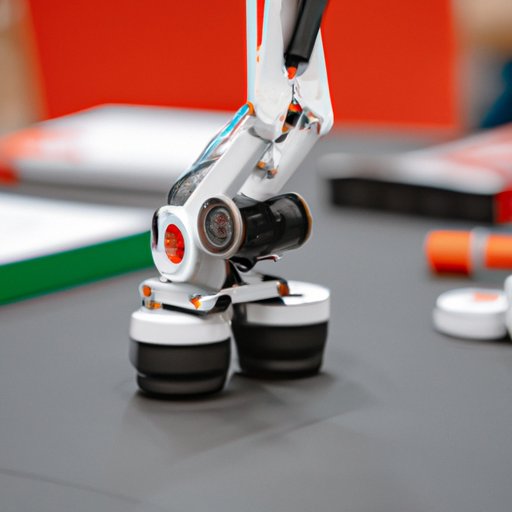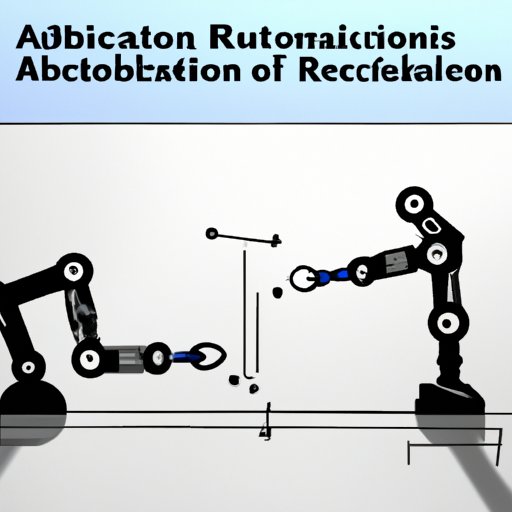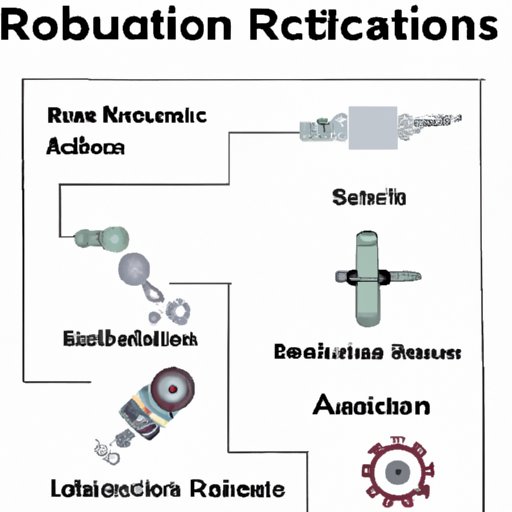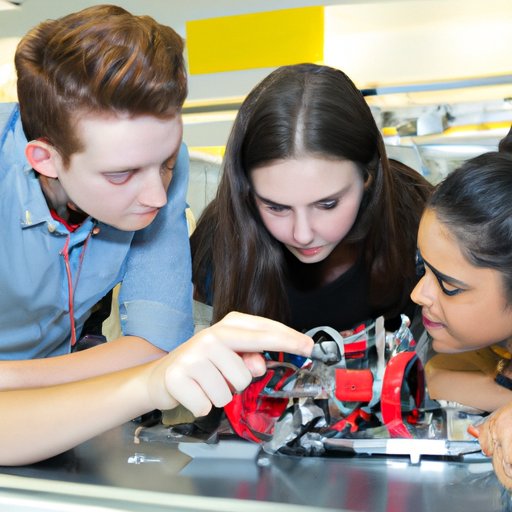Introduction
Robotics is a rapidly growing field that has the potential to revolutionize many areas of life, from manufacturing to healthcare. At its core, robotics relies on the use of machines and automation to complete tasks more efficiently than humans can. But what makes this automation possible? The answer lies in the use of actuators, which are the motors that power robotic systems.
What is an Actuator?
An actuator is a device that converts energy into motion or force. In robotics, actuators are responsible for powering the robot’s movements. They allow robots to move, turn, and interact with their environment in a controlled manner. Actuators typically come in the form of electric motors, hydraulic cylinders, or pneumatic cylinders, although there are other varieties as well.
An Overview of Actuators and Their Role in Robotics
Actuators are essential components of any robotic system. Without them, robots would be unable to move and operate autonomously. By providing the power and control necessary for robots to interact with their environment, actuators enable robots to perform complex tasks such as assembly, inspection, and navigation. As such, actuators are essential for robotics.

Exploring the Role of Actuators in Robotics
To understand the role of actuators in robotics, it is important to first look at the basics of how they work. Actuators are powered by energy sources such as electricity, hydraulics, pneumatics, or even springs. This energy is converted into mechanical motion, which powers the robot’s movement. Depending on the type of actuator used, this motion can be linear or rotary.
Understanding Actuators: How They Power Robots
Actuators are the driving force behind robotic systems. They provide the power and control needed to make robots move and interact with their environment. Actuators are typically powered by electricity, but they can also be powered by other sources such as springs, hydraulics, or pneumatics. Depending on the type of actuator used, this power can be used to create linear or rotary motion.

The Science Behind Robotics: Actuators Explained
Actuators are complex devices that rely on science to operate correctly. To understand the role of actuators in robotics, it is important to understand the science behind them. According to research conducted by the University of Michigan, “actuators convert electrical signals into mechanical motion. This conversion requires careful control of the motor’s speed, position, and torque.”1 Actuators are designed to be highly efficient and reliable, ensuring that robots can operate effectively in a variety of environments.
How Actuators Enable Automated Movements in Robotics
Actuators are the key component of any robotic system. Without them, robots would be unable to move or interact with their environment. By providing the power and control necessary for robots to operate, actuators enable robots to perform complex tasks such as assembly, inspection, and navigation. Different types of actuators are used in robotics depending on the type of motion required. For example, a DC motor is often used for linear motion while a stepper motor is used for rotary motion.
Different Types of Actuators
There are a variety of actuators available for use in robotics. Common types include DC motors, stepper motors, servo motors, and pneumatic cylinders. Each type of actuator has its own advantages and disadvantages, so it is important to choose the right actuator for the job. For example, DC motors are typically cheaper and simpler to use than servo motors, but they are not as precise.
How Actuators are Used in Robotics
Actuators are used to power robotic systems, enabling robots to move and interact with their environment. Depending on the type of actuator used, this motion can be linear or rotary. Actuators are also used to control robotic arms and hands, allowing robots to manipulate objects in their environment. In addition, actuators are used to power robotic legs, enabling robots to walk and move around.
Benefits of Using Actuators in Robotics
The use of actuators in robotics provides a number of benefits. For example, actuators enable robots to move and interact with their environment autonomously. This eliminates the need for human intervention, allowing robots to complete tasks faster and more efficiently. In addition, actuators provide precise control over robotic movements, allowing robots to complete complex tasks with accuracy and precision.
Conclusion
Actuators are essential components of any robotic system. They provide the power and control necessary for robots to move and interact with their environment. Different types of actuators are used in robotics, depending on the type of motion required. Actuators enable robots to complete complex tasks with accuracy and precision, eliminating the need for human intervention. By understanding the role of actuators in robotics, we can better appreciate the power of robotic systems and their potential to revolutionize many areas of life.

Summary of the Role of Actuators in Robotics
In summary, actuators are the driving force behind robotic systems. They provide the power and control necessary for robots to move and interact with their environment. Different types of actuators are used in robotics, depending on the type of motion required. By providing the power and control needed for robots to operate autonomously, actuators enable robots to complete complex tasks with accuracy and precision.

Final Thoughts on Actuators in Robotics
Actuators are essential components of any robotic system. They provide the power and control necessary for robots to move and interact with their environment. By understanding the role of actuators in robotics, we can better appreciate the power of robotic systems and their potential to revolutionize many areas of life.
(Note: Is this article not meeting your expectations? Do you have knowledge or insights to share? Unlock new opportunities and expand your reach by joining our authors team. Click Registration to join us and share your expertise with our readers.)
